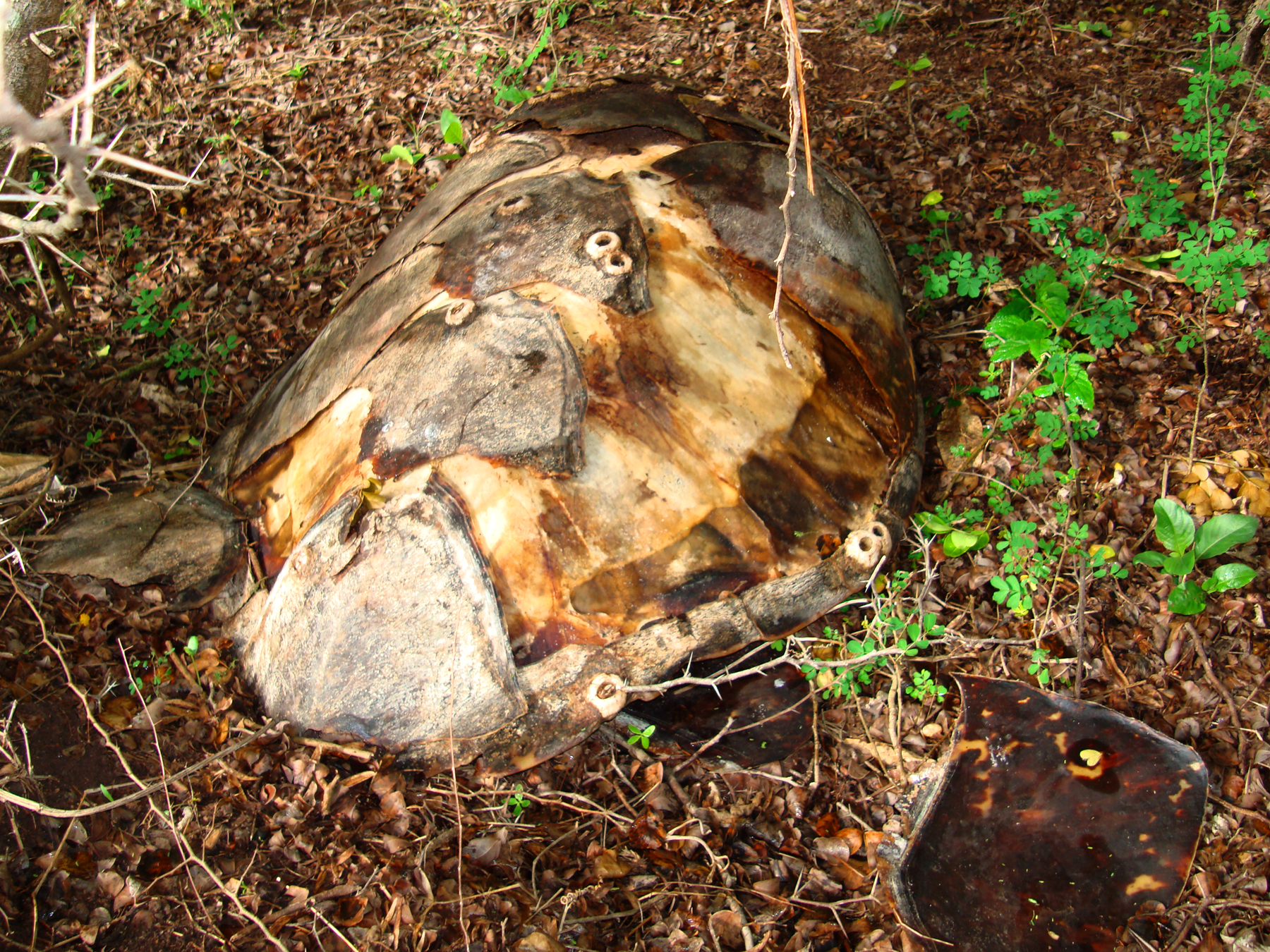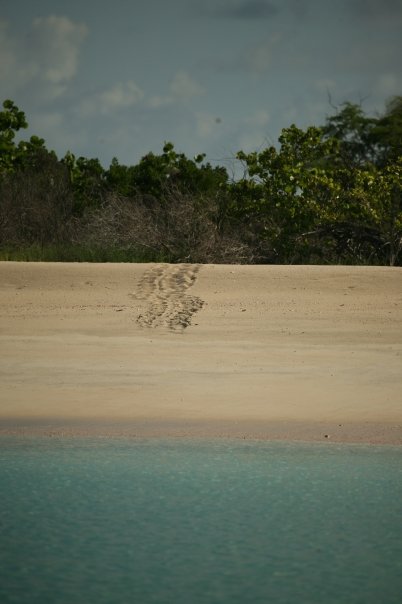Taken from an interesting wiki post on the subject:
Light pollution poses a serious threat to wildlife, having negative impacts on plant and animal physiology. Light pollution can confuse animal navigation, alter competitive interactions, change predator-prey relations, and cause physiological harm.[50] The rhythm of life is orchestrated by the natural diurnal patterns of light and dark, so disruption to these patterns impacts the ecological dynamics.[51]
For the second year running street lights along some of Antigua's most important turtle nesting beaches are killing turtles. Dumping old technology isn't a new thing for the Chinese and the delighted our local politicians by giving them extremely energy hungry street lights for our roads at a time when we can't afford to pay for the fuel that powers them. Why they didn't give us solar powered lights like they even use in China I can only guess and that could be written about on another blog. Anyway these lights are killing turtles. For millions of years sea turtles, all of which are now on the endangered species list, have been nesting on Antigua's shores. These days many don't make it.
The Hawksbill Turtle nests between May and November typically but some females will come at other times during the year too. Leatherbacks and Green turtles nest during the same period at other times during the year. The reality is that there are turtles nesting in varying numbers during every month of the year here in Antigua and Barbuda. The summer months are the busiest.
Read this little piece I did for Antigua's Enjoy Magazine to get an idea about why turtles are being killed by the fairly new Chinese Street Lights and other light pollution here in Antigua:
The sand begins to cool after the sun sets, and the little hawksbills inside have recently broken free from their soft ping pong ball sized eggs. They are getting ready for their first view of the outside world. Digging up to the surface from nearly two feet down, the turtles know that the cooling temperatures mean it is now night and safer to journey to the water in the darkness. As if from a scene taken from the film The Great Escape, the little turtles emerge from their sandy hole and make a dash for the water in the darkness. Amazingly they have some sort pre programmed internal instinct that tells them to go for the brightest thing as they emerge from the nest. The odds of survival are very bad for the little ones and at best, only one in 1000 hatchlings will reach maturity due to all sorts of predators and other threats. Before humans arrived in the Caribbean, the brightest thing on a beach was always the sea lit up by the reflection of millions of stars and often times the moon. Unfortunately these days, artificial lights along the shore often confuse the hatchlings leading them away from the water. Darkwood Beach is a perfect example of harmful lighting to what is actually a good turtle nesting beach. Let your hotel manager or political representative know if you think that lights along your beach are too bright. There are many solutions to this lighting problem which include special bulbs and careful positioning of lights. Turtles almost always hatch at night, but occasionally for one reason or another, a nest may hatch during the day. The artificial lights are just one of many things that can harm the hatchlings.
Antigua and Barbuda see turtles nesting almost year round with Greens, Leatherbacks and Hawksbills having different seasonal nesting times. The busiest time is from May to November when we see beautiful Hawksbills nesting on our shores. My wife runs a turtle program with the Environmental Awareness Group which aims to study nesting habits on Antigua's main land beaches. Most of the study about turtle nesting here has focused on the now famous Jumby Bay turtles which actually nest on Pasture Bay on Long Island. Anyway, she has found several very important beaches here where large numbers of turtles still nest, and the hope is that the study of our turtles can be expanded so that developments along the shore may be cognizant of how important these beaches are.
We are very lucky here in Antigua and Barbuda to have both resident turtles living and feeding off shore as well as nesting adult turtles which are not necessarily the same thing. For example, historically turtles were killed for food when they came ashore in Bermuda to nest, so there are no adult turtles to be found there now. Instead they have hundreds and hundreds of juvenile turtles feeding and passing through the waters there after hatching from places as far away as Costa Rica. They even tried to move eggs from other countries to be incubated on Bermuda only to find out that 20 years later none returned to lay eggs there. Yes it does take about 20 years for the mommy turtle to reach sexual maturity and despite being very territorial the female hawksbill will travel up to 300 miles to return to the beach from where she hatched to lay eggs. In the case of Bermuda they found out that it wasn’t just where they hatched from, but rather from where they have historically hatched from. It’s more of a geographical genetic marker which is difficult to understand and is still being studied. The mother turtle will lay between 100 and 180 eggs into a nest usually in some sort of beach vegetation before going back into the sea. She will come back in two weeks to nest again and may nest three or four times during the season. As mentioned, shoreline vegetation is very important for hawksbills and like other reptiles, the temperature of a nest can help determine the gender of the hatchlings and a nest that has a good mix of daylight warmth and shade will provide a balanced percentage of little boy and girl turtles.
The little ones who have just hatched must swim non stop for days to pass all the dangers of the inshore predators as well as the predators on the off shore reefs. Their goal is to make it into the Atlantic where they can meet up with the huge currents that sweep past the Caribbean. In those currents, they look for floating clumps of Sargasso weed which are interesting habitats providing both food and protection from predators. It will be a long a treacherous two years before they return to their future homes in the Caribbean.
When the Environmental Awareness Group (EAG) found out that Antigua was being given thousands of street lights by the Chinese government they sprang into action. Mykl Clovis who runs the Antigua Sea Turtle Program for the EAG, wrote a letter carefully explaining what normal regular street lights can do to nesting turtles and their hatchlings. She explained why it happens and gave solutions that are used in the USA and many other places around the world where turtles nest. Things like pointing the lights away from the beach, using different frequency bulbs, turning lights off during nesting times, putting the lights lower and behind beach vegetation. I am told that the letter was sent to the Prime Minister, the Fisheries Ministry, the Antigua Public Utilities Authority, the Environment Division, the Public Works Department, The DCA.... you name it and the letter was sent to them. When the EAG met with Cabinet some time in 2010 before the lights were turned on the issue was brought up again. The Prime Minister admitted that he had seen the letter himself. One of the Ministers was heard saying that nobody is going to tell him to turn off his lights! This was the minister responsible for an area where there are three important nesting beaches. Later that summer when the lights were on baby turtles were run over as they wandered around on the road adjacent to the beach.
Last night a mother turtle that had come up to lay on Jabbawock beach ended up in the middle of the brilliantly lit road. A driver nearly ran it over and pulled off to the side of the road. The lights along the road by the bridge were confusing the endangered species and it ended up falling off the bridge into the swamp. The driver saw it swim further into the swamp and away from the beach. As if things are not difficult enough for these amazing creatures!!!
I would like to see lights out along Jabbawock, Dark Wood Beach, Fryes Beach, Little Fryes, Crab Hill Beach and Turners. Then there is the street lights and sport's complex lights in Old Road. Why are the sports facility's lights left on all night when nobody is playing there? We must have money to burn in this country. There are many other beaches where artificial lights cause problems. These endangered animals are on our passports and our leaders just ignore science and reason and are letting them perish.
The day after I blogged this story, this youtube video was posted in Barbados:
It shows a nesting turtle that had been messed up by lights in exactly the same way that the one from jabbawock beach here did here on the same night.



This work is one of the most important responsibilities that we have as being guardians of the natural resources of our planet. It is every successive generation's mandate to preserve the environment. A vital wildlife protection is integral to maintaining the balance of nature and the wildlife it sustains.
ReplyDelete